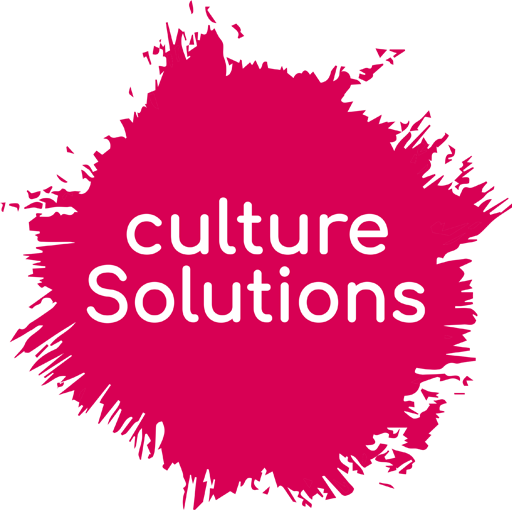#TeamEurope impact: Effective Digital Communities of Practice
By Nicole McNeilly, Celia Zayas, Domenico Valenza & Damien Helly
In our first blog on a recommended EUDEL Community of Practice (CoP) for culture we presented why they are a key component of retaining institutional memory and supporting collective learning. In this second blog, we draw lessons from our joint experience with the EU Commission’s DG INTPA Culture Seminar to think about how to build and strengthen a variety of culture-related European communities of practice on international cultural relations, such as a Community of Practice on cultural heritage protection and peace-building, that have a global remit and inclusivity at the core.
What does a successful CoP look like?
For a CoP to be successful, it:
- Has a ‘home’ for its resources and for communication between members.
- Responds to specific needs which should be clearly mapped and understood.
- Isn’t designed to last forever. Whatever their duration, CoPs should be regularly evaluated to see if they are meeting their objectives. They should be improved or closed if they are not.
- Has voluntary but incentivised membership, for example, by detailing participation in and contribution to a CoP in a job profile and creating a sense of prestige through participation.
- Must remain a safe, inclusive and non-hierarchical space for knowledge-sharing, free from specific national political influences and inhibiting institutional constraints.
- Is inclusive of multiple languages and position-holders within a non-hierarchical structure.
- Supports its members’ interaction with external stakeholders.
- Can be managed centrally but support can come from different levels – regional, administrative, outsourced and/or high-level advocacy.
- Encourages regular interaction and grows interest in participation by creating a sense of momentum, e.g. by an engagement and activity programme.
Are online formats fit for community building and engagement in a Community of Practice?
In short, yes. Though digital interaction will never be a replacement for in-person connection, it can, to a great degree, create comparable outcomes that can be experienced by even more people.
Digital formats can make CoPs more inclusive, sustainable and impactful. By eliminating travel costs and the time needed to travel to participate (a barrier for those with caring responsibilities, for example), participants can join from all over the world. At the same time as being more inclusive, digital formats significantly reduce the environmental impact. It is easier to implement simultaneous interpretation during events and training while keeping acceptable levels of interactivity, therefore increasing multilingual diversity and linguistic accessibility.
Last minute registrations are (within reason) possible in a way which would not have been possible where travel is required. Importantly, training and events – community activities – can be experienced by multiple colleagues. Digital events allow more scope for the reusability of materials: powerpoints can be shared and sessions recorded for later consultation and for those not able to attend.
Challenges
Despite working to maintain interactivity levels and positive experiences, relationship building outcomes are less strong in a digital event format. These are crucial to a CoP and so we conclude that some travel and face to face interactions will always be necessary for a successful CoP.
Along with interactivity, transitioning to online events and opportunities to develop peer relationships comes with many other challenges. These include digital fatigue, dealing with connection issues or, with participants from South America to Asia, accommodating to different time zones. The digital divide (in terms of digital literacy with online tools and connectivity) is a real challenge both for participants and speakers. Digital formats also require even more preparation time than physical training.
Prepare more, improvise less
When designing the training with our DG INTPA colleagues, we tried to emulate the interactivity experienced by participants of past Culture Seminars. Alongside the core training exercise, we used a number of interactive formats to create a sense of a community of practice at the same time as delivering the programme learning objectives.
- A playful ice-breaker and evaluation: A creative ice-breaker helped participants to know a few of their peers by coaching each other on the use of Miro, the main digital tools, which would later be used in the main simulation game exercises. Our evaluation was held in a digitally adapted fishbowl format where participants could imagine themselves sitting on a sunny terrace sharing their thoughts on what they had learned and experienced. While Miro couldn’t quite deliver the sun, the format encouraged participants to respond openly and to share their feedback for next steps.
- Campfire sessions: With slightly less atmosphere than in real life, digital campfire sessions were open knowledge-sharing sessions where participants discussed a project in terms of what worked, what didn’t, and what they would recommend for others. Setting out clearly the conditions of participation encouraged peers to share frankly about their experiences. They could draw on official evaluations or their own reflections.
- Coffee conversations: No-one likes an early morning (depending on time zones, for some it was a very early morning). In two coffee conversations, a culture Solutions moderator facilitated concise and direct discussions between EUDEL colleagues and #TeamEurope partners EUNIC, the Cultural Relations Platform and UNESCO.
If you are interested in developing culture-related Communities of practice in EU external action, culture Solutions will be happy to share more experience and tips with you. Contact the Training and know-how sharing team.
The views expressed in this article are personal and are not the official position of culture Solutions as an organisation.
Image credits: Sky News

